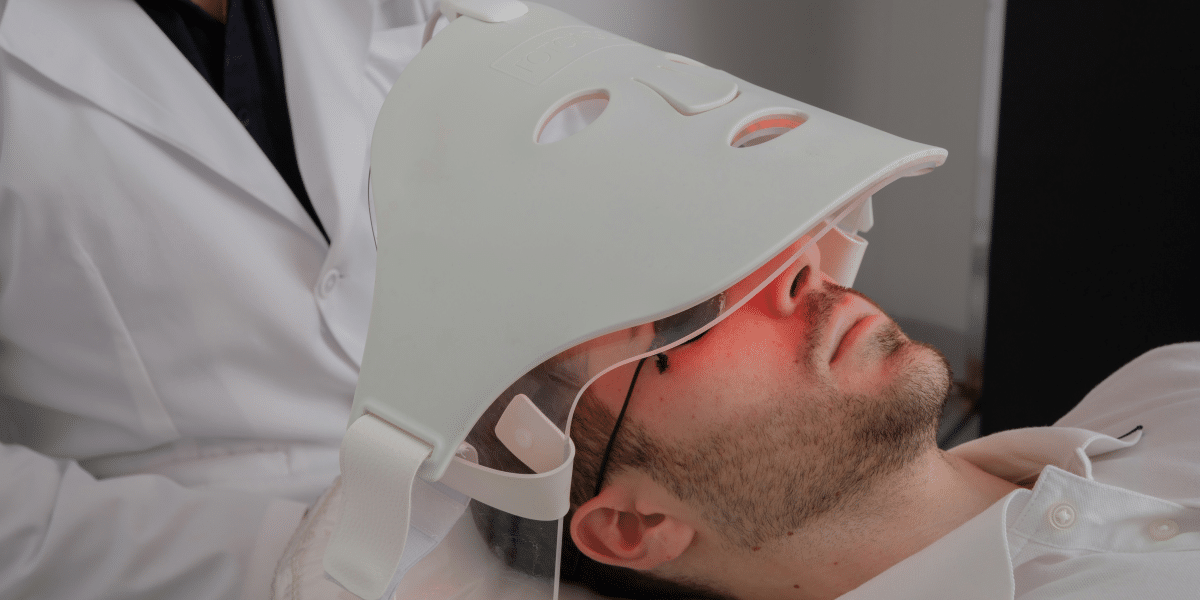Red light therapy has been gaining attention across wellness and health communities for its potential therapeutic applications. Originally popularized for skincare and muscle recovery, this non-invasive treatment uses low-level wavelengths of red light to stimulate cellular activity in the body. While some research has explored its potential benefits, it is essential to take a measured, nuanced approach when discussing its effects, especially when it comes to sensitive areas such as the eyes.
What is Red Light Therapy?
Red light therapy (RLT) works by exposing the skin to specific wavelengths of red or near-infrared light, which are absorbed by the body’s cells. These wavelengths are thought to stimulate cellular energy production, particularly within the mitochondria, potentially enhancing cellular repair and regeneration. This process, known as photobiomodulation, has been studied for various therapeutic purposes, including muscle recovery, skin health, and joint pain relief.
While the therapy has shown promise in several areas, it’s important to emphasize that its full range of effects and long-term benefits are still being researched. It is not a replacement for traditional medical treatment, and individuals interested in trying red light therapy should consult healthcare professionals, particularly if they have pre-existing conditions.
Can Red Light Therapy Be Used for Eye Health?
Recently, there has been growing interest in how red light therapy might impact eye health. Since the eyes are particularly sensitive to light, some researchers have explored whether carefully calibrated doses of red light could positively affect certain visual conditions, such as eye strain from digital screens. However, it’s crucial to highlight that much of this research is in the preliminary stages, and further studies are needed to fully understand the therapy’s impact on the eyes.
Red light therapy for eye-related concerns, such as reducing eye strain or fatigue, is still a developing field. Individuals who spend long hours in front of screens or those experiencing eye discomfort might be curious about non-invasive treatments like RLT. But while some early studies have suggested that red light may improve mitochondrial function in retinal cells, this area of research is still in its infancy.
Safety Considerations for Red Light Therapy and Eye Health
Safety is a primary concern when discussing red light therapy, especially regarding its potential use around the eyes. The eyes are one of the most sensitive organs in the body, and inappropriate light exposure can lead to discomfort or harm. For this reason, any use of red light therapy near the eyes should be done cautiously, ideally under the guidance of a healthcare professional or with a device specifically designed for safe use around the eyes.
It is essential to select devices that meet safety standards and are intended for this particular use. Protective eyewear may also be recommended to minimize exposure to excessive light, even when using approved devices. Consulting with an optometrist or other eye health specialist is highly advisable for anyone considering red light therapy to ensure its appropriateness for their specific situation.
The Role of Red Light Therapy in General Wellness
Beyond potential applications for eye health, red light therapy has gained popularity for other wellness purposes. Individuals use RLT for skincare, muscle recovery, and inflammation reduction. When used as directed, red light therapy can be part of a broader wellness routine. Some people find it helpful for improving skin appearance or soothing sore muscles after exercise.
However, as with any wellness trend, it’s important to approach it with realistic expectations. Red light therapy is not a cure-all, and its effectiveness can vary based on individual factors such as age, health status, and the condition being targeted. Many of the reported benefits are anecdotal, and while there are scientific studies supporting some of these uses, much of the research is still ongoing.
Using Red Light Therapy Safely and Effectively
If someone decides to incorporate red light therapy into their wellness routine, there are several best practices to keep in mind to ensure safety and maximize its potential benefits:
Consult with a Professional: Before starting red light therapy, particularly if using it near the eyes or for a specific health concern, consult a healthcare provider to ensure it is safe and appropriate for your condition.
Choose the Right Device: Select a device that has been tested for safety and efficacy. Not all red light therapy devices are created equal, and some may be better suited for specific uses than others. Check for certifications and reviews to ensure quality.
Follow Instructions Carefully: Always follow the manufacturer’s guidelines regarding distance, duration, and frequency of use. Overexposure to light can cause discomfort or unintended effects, so it’s crucial to stick to the recommended usage.
Use Protective Eyewear When Necessary: When using devices near the eyes, protective eyewear may be necessary to prevent excessive light exposure. This is especially important when using devices not specifically designed for eye treatments.
Monitor Your Response: As with any treatment, pay close attention to how your body responds to red light therapy. If you experience discomfort, redness, or any other adverse effects, stop using the device and consult with a healthcare professional.
A Balanced Approach to Red Light Therapy
Red light therapy offers intriguing possibilities for wellness, but it’s essential to approach it with a balanced perspective. While there is potential for this technology to support various aspects of health, including skin and muscle recovery, its use for eye health is still being studied. Anyone interested in exploring red light therapy should do so with caution, especially when considering its use around sensitive areas like the eyes.
As more research emerges, it will be exciting to see how red light therapy evolves and whether it can contribute to improved wellness practices. For now, staying informed and consulting professionals ensures that individuals can make safe and educated decisions about incorporating this technology into their routines.
Visit 369 Wellness Center for more information on Red Light Therapy.
Disclaimer: This content is for informational purposes only and is not intended as medical advice, nor does it replace professional medical expertise or treatment. If you have any concerns or questions about your health, always consult with a physician or other healthcare professionals.
Published by: Martin De Juan


















